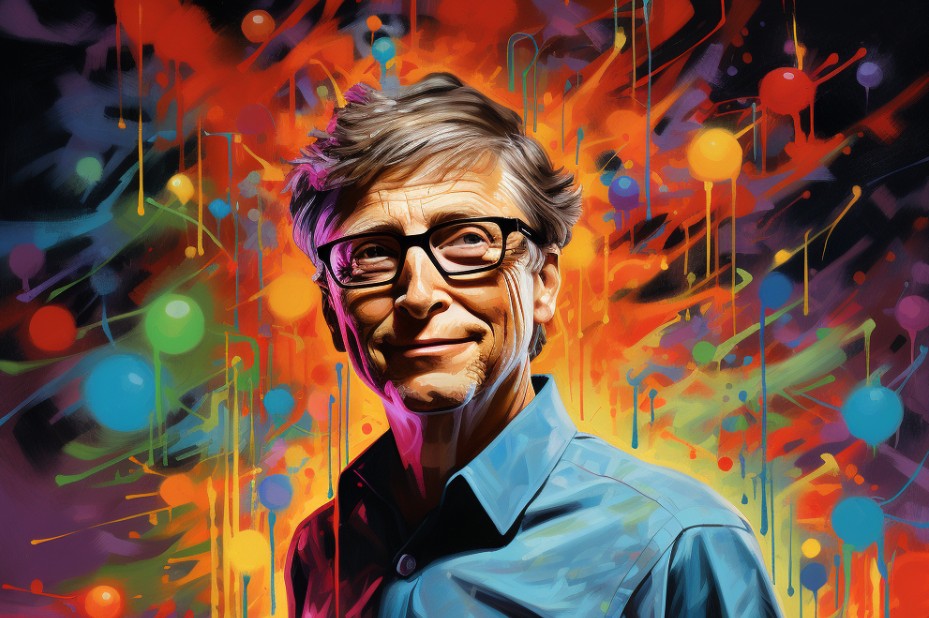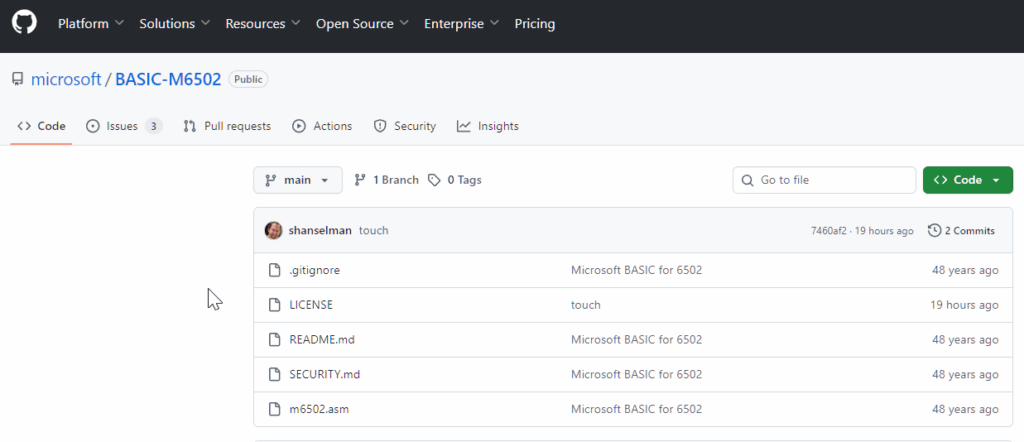
Microsoft has officially released the source code for its first version of BASIC for the MOS 6502 processor. For decades, it existed only in the form of leaks, museum copies, and unofficial builds. Now, for the first time, it is published under a free license and available for study and modification.
The first version of Microsoft BASIC appeared in 1975 for the Altair 8800 microcomputer based on the Intel 8080 processor. It was written by the company’s founders, Bill Gates and Paul Allen. A year later, Gates, along with his second Microsoft employee, Rick Weiland, ported BASIC to the MOS 6502 processor. In 1977, Commodore purchased the license for $25,000 and integrated it into its PET, VIC-20, and Commodore 64 systems.
The latter two computers sold millions of copies and became a major factor in the mass diffusion of computer technology.

Version 1.1 was released to the public, incorporating improvements to the garbage collector proposed by Commodore engineer John Feagans and Gates himself in 1978. On PET devices, this version was known as BASIC V2. The code contains 6,955 lines of assembler and is published on GitHub under the MIT License, which permits unrestricted use and resale.
Microsoft has provided the repository with historical notes and commits timestamped “48 years ago”. The source code implements conditional compilation for several platforms of the time: Apple II, Commodore PET, Ohio Scientific, and KIM-1.

Features include a full set of BASIC operators, array support, string handling, floating-point arithmetic, I/O, string garbage collection, and dynamic variable storage.
Particular emphasis is placed on efficient memory use, which is essential for 8-bit systems. The code also contains Bill Gates Easter eggs, hidden in the STORDO and STORD0 labels, confirmed by Gates himself in 2010.

The MOS 6502, for which the interpreter was created, became an industry legend.
It was the basis of the Apple II, the Atari 2600 and NES game consoles, and an entire line of Commodore home computers. The simplicity and efficiency of the architecture made it popular among manufacturers and influenced the formation of the personal computer market. Today, interest in the 6502 shows no sign of waning: enthusiasts are creating FPGA replicas, developing emulators, and even preparing a new “official” reissue of the Commodore 64 based on programmable logic.
Microsoft emphasizes that it was BASIC that made the company a significant player in the market, long before the advent of MS-DOS and Windows. Mass licensing of this interpreter by various manufacturers became the foundation of Microsoft’s business model in its early years.
From 1977 to today, BASIC lives on: from the blinking cursor on the Commodore screen to the FPGA versions of 2025. Today, the historical code is not only preserved, but also transferred to the community for study, adaptation, and free experimentation.
Follow us on Google News to receive daily updates on cybersecurity. Contact us if you would like to report news, insights or content for publication.
